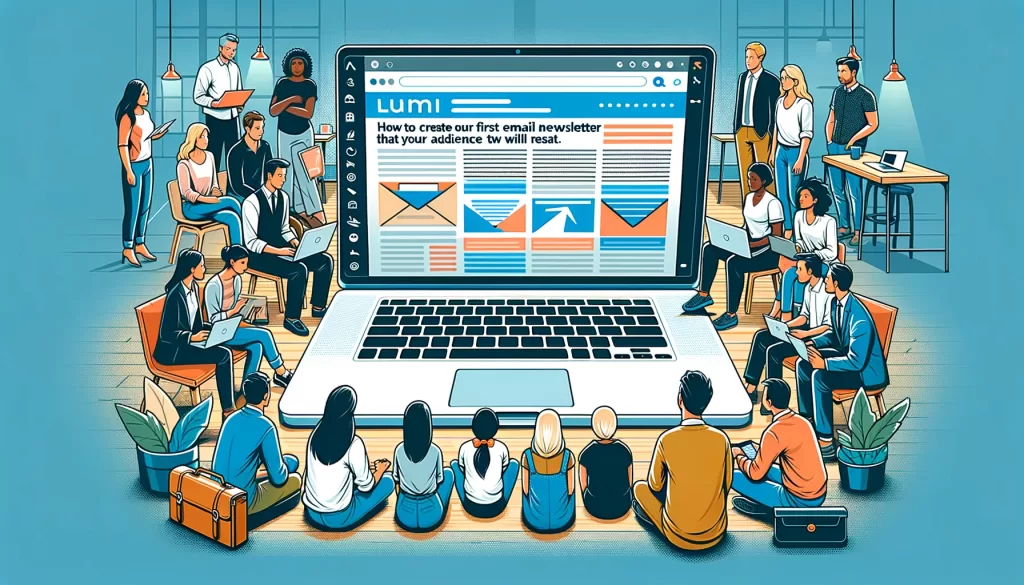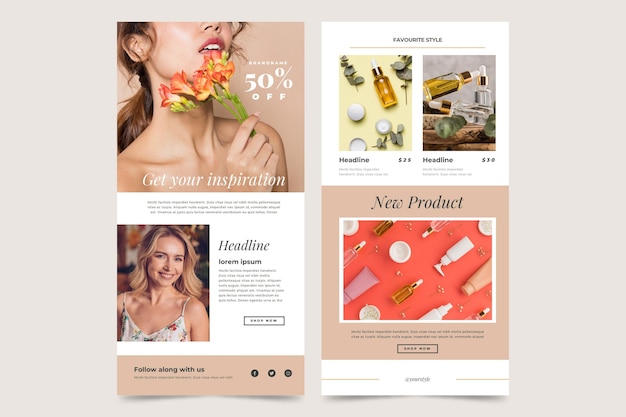Content Overview
- Getting Started
- Why Newsletters Matter in Online Marketing
- Your Main Objective: Delivering Value
- Back to Basics: Structuring Your Newsletter
- Leveraging Email Newsletter Services
- Newsletter Essentials: Tips and Best Practices for Beginners
- Keeping Your Audience Engaged: Content Suggestions and Strategies
- Evaluating Success and Implementing Improvements
- Wrapping Up
Getting Started
The Internet is a vast space bustling with activity and endless content competing for your customers’ attention. So, how do you stand out and convert casual visitors into regulars?
Here’s where newsletters prove their worth. In the digital realm, your website is your storefront, and your newsletter is the enticing scent that attracts people and keeps them coming back for more. It’s not just about disseminating information; it’s about forging a connection that transforms visitors into a dedicated community.

Newsletters are an essential instrument in digital marketing, enabling businesses to sustain ongoing engagement with their audience. Through newsletters, you can deliver consistent value while subtly reminding readers about your business, products, or services.
Why Newsletters Matter in Online Marketing
In today’s rapidly evolving digital environment, newsletters are more than just a communication tool; they serve as a bridge between your business and your audience. They provide a platform to share insights, updates, and narratives, fostering a relationship grounded in trust and value. This connection is vital for long-term customer retention and brand loyalty.
But it’s not just about disseminating information.
It’s about striking the perfect balance between content that delivers value and promoting your business.
By concentrating on what your audience values, you transform your newsletter into a must-read, rather than just another email in the pile.
Your Main Objective: Delivering Value
The essence of a successful newsletter is its capacity to provide unmatched value to its readers.
This isn’t just about disseminating information; it’s about enhancing your audience’s experience.
When they see your email in their inbox, you want them to be curious, “What kind of useful nugget have they sent me today?”
Consider providing:
- Expert Insights: Share your unique expertise on topics relevant to your audience.
- Handy Tips: Share productivity tips, shortcuts, tricks, insights that help speed up the work for your audience.
- Latest Industry News: Keep your readers informed about the latest trends and developments.
- How-To Guides: Offer practical advice and step-by-step guides to solve common problems.
- Exclusive Offers: Give subscribers access to special deals or early product releases.
- Personal Stories: Connect on a personal level by sharing experiences and lessons learned.
Remember, the goal is to make your newsletter so valuable that subscribers look forward to receiving it. It should be a mix of education, entertainment, and engagement that resonates with your audience’s needs and interests.
Back to Basics: Structuring Your Newsletter
A well-structured newsletter is key to keeping your audience engaged. A typical newsletter includes:
- Header: A visually appealing header with your logo and newsletter title.
- Introduction: A brief, engaging introduction setting the tone for the content.
- Main Content: The body of your newsletter, where you deliver the bulk of the value.
- Call-to-Action: Encourage your readers to engage further, whether it’s visiting your website, signing up for an event, or taking advantage of an offer.
- Footer: Include necessary information like contact details, social media links, and a way to unsubscribe.
Overall length: 400-1000 words
Images to include: 2 or more
Calls to action needed: 1 or more
Leveraging Email Newsletter Services
Using an email newsletter service like MailChimp, Aweber, or VerticalResponse simplifies the process of creating and managing your newsletters. Here’s how to get started:
- Collect Emails with a Lead Magnet: Use a compelling lead magnet on your website to encourage visitors to subscribe to your newsletter.
- Select a Newsletter Service: Sign up for a service that meets your needs in terms of features, usability, and price.
- Upload Your Email List: Prepare your email list in CSV format. Most email platforms like Excel or Google Sheets allow you to export your contact list as a CSV file.
- Pick a Newsletter Template: Select a template that aligns with your brand’s aesthetic and message. Customize it as needed.
- Compose Your Newsletter: Add your content, links, and images. Make sure it’s engaging and provides value to your audience.
- Schedule Your Mailing: Decide on the frequency and timing of your newsletters and schedule them accordingly.
- Analyze Campaign Statistics: After sending out your newsletter, use the service’s analytics tools to review open rates, click rates, and other engagement metrics.
Newsletter Essentials: Tips and Best Practices for Beginners
If you’re new to newsletters, here are some fundamental best practices:
- Understand Your Audience: Customize your content to align with the interests and needs of your readers.
- Consistency is Crucial: Maintain a regular schedule for your newsletters to keep your audience engaged.
- Keep It Brief: Deliver value in a clear, concise manner. Avoid overwhelming your readers with too much information.
- Use Engaging Subject Lines: Craft subject lines that entice readers to open your newsletter.
- Mobile Optimization: Ensure your newsletter looks good on mobile devices, as many people read emails on their phones.


